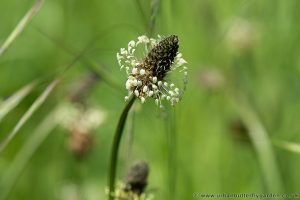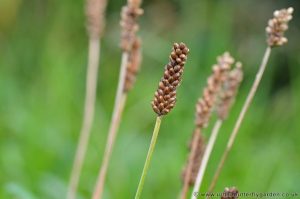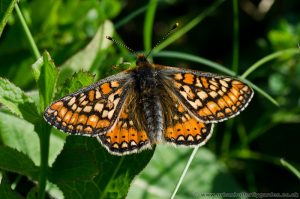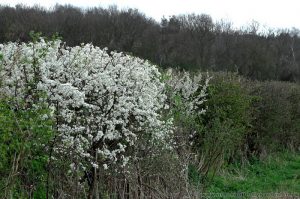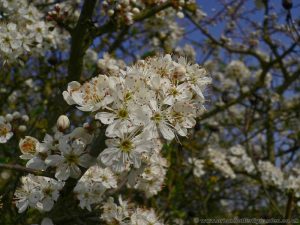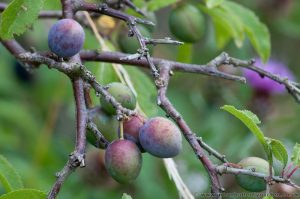about
Ribwort Plantain or Narrowleaf plantain as it is also known is a Widespread Perennial across the British isles, commonly found in a wide range of habitats such as Meadows, tracks, rough ground and is often seen as a weed garden lawns
Mature plants grow to form a rosette of long and narrow dark green ribbed leaves. The flowers are cylindrical on long stems and may be seen April to September.
Where to find Ribwort Plantain
Generally Plantains (Plantago.ssp) are particularly drought tolerant and most often found growing in undisturbed and compacted calcareous (alkaline) soils. Adding plug plants or seeding an area with Ribwort Plantain should be considered in the early stages when creating and establishing a wildflower meadow of any size.
Growing Ribwort Plantain from seed
Ribwort Plantain can be grown from fresh seed with the right conditions almost any time of year if required. Planted in moist free draining seed compost, in a covered tray or window sill propagator, pre soaked seed may germinate in as little as 4-6 days. Plant on when large enough to easily handle in to pots, so the first pair of leaves are just level with the soil
Despite being commonly found Ribwort Plantain (Plantago lanceolata) is the food plant of the Larvae of rare British butterflies the Glanville and Heath Fritillary
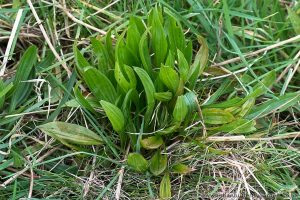
Narrow-leaf Plantain (Plantago lanceolata) rosette of leaves leaves pushing through the grass in March
Information
- Name: Ribwort Plantain (Plantago lanceolata)
- Family Group: Plantaginaceae
- Type: Perennial
- Other names: Narrow leaf plantain, Ribwort plantain, Ribleaf, English Plantain
- Similar appearance to: Hoary Plantain, Greater Plantain but nothing like Bananas used for cooking
- Flowering: April to September
- Position: Sun, semi-shade, mainly well drained calcareous (Alkaline) soils. Looks good when grown along side Salad burnet (Sanguisorba minor)
- Height: around 20cm
- Larval food plant: Glanville Fritillary (Melitaea cinxia), Heath Fritillary
- Nectar plant: Common Blue (Polyommatus icarus), Grizzled Skipper (Pyrgus malvae), Bees, and other insects
- Photograph: 22th March 2016
- Location: Growing and photographed in my Garden

